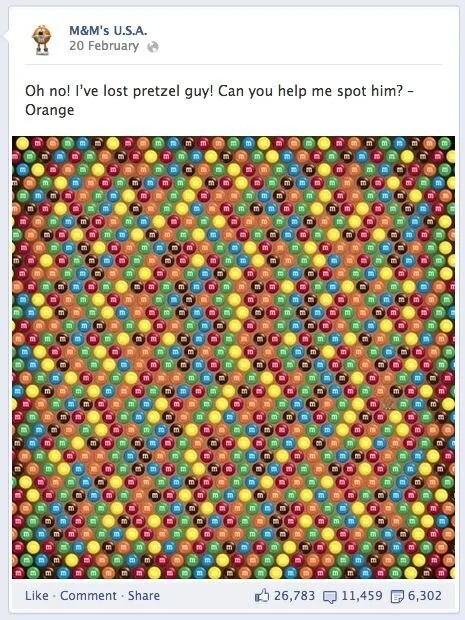Gamification(3) — Interactive & AR Campaigns
When people play games, they spend time interacting with the brand and create long-term engagement with the brand. 75% of the smartphone owners have played a game on their device, and 46% play games on a daily basis according to Kamakshi S., Oct 16, 2014, Forbes. Companies add elements such as progress bar, rewards, challenges, points, rating, virtual currency, leaderboards, virtual present, physical products to make sure the game triggers the competitive nature of the user. Most importantly, it makes customers feel like they are doing something meaningful for using the product.
Here are some questions to consider when starting a marketing campaign using gamification:
Who is your audience and what motivates them?
How can game mechanics tell your message? What elements should be implemented in your game? For example, do you have a character in your brand? or any core value in your business can become a game?
What is the goal of the campaign and how can it be measured?
Here are some successful gamification campaigns:
1. M&M’s Eye Spy pretzel: M&M’s Brand launched the pretzel M&M’s in 2010. To promote the new product, M&M’s posted to their Facebook an image and challenged their followers to spot the pretzel among the M&M’s. This simple, low-budget marketing strategy resulted in an explosion of engagement, over 10K comments, and 6K shares.
2. McDonald’s Monopoly Game: In 1987, McDonald launched its famous Monopoly game — when you buy products in McDonald’s, you will receive a token. Originally, customers received a set of two tokens with every purchase. Tokens correspond to a property space on the Monopoly board. You can win from cash, gift cards, cars, to get free McDonald’s products.
3. The Magnum Pleasure Hunt: In 2011, Magnum launched “Magnum Pleasure Hunt”, an online web game that players would play as an avatar and jump their way through different corners of the internet. The player traveled to webpages of brands, such as Samsung, Hotel San Martino, and sister-company Dove, collecting chocolate bonbons. Once the player completed the game, in likely less than 10 minutes, they were presented with an image of Magnum’s new ice cream product, the Magnum Temptation. The campaign was such a success, they brought it back the following year to promote another new product, the Magnum Infinity.
Later that year, in August of 2012, Magnum came back to unveil an event that let people roam the streets of Amsterdam collecting bonbons using augmented reality. Guests of the event could exchange their points for Magnum ice cream bars and other prizes that day. 1,000 people attended the event in Amsterdam.
Augmented Reality has become incredibly popular due to the wide accessibility of smartphones. Many companies and brands have begun experimenting with how it might forge a stronger connection to their consumers. Here are some good examples of recent successful AR marketing campaigns:
Volvo S60 Augmented Reality App: On March 12, 2011, Volvo launched a unique marketing campaign in partnership with YouTube. For only one day, users could download a mobile app that could scan an ad on YouTube’s home masthead. When the user aimed their smartphone at the YouTube masthead, the Volvo S60 would come to life and the user could drive the new vehicle. Without the app, the campaign still functioned as a traditional advertisement. Today, Volvo continues to incorporate AR into their advertising, such as their AR Facebook ads that open your phone camera to showcase different car models live.
2. The New Yorker Today: The New Yorker worked with cartoonist Lauren Finck to bring cartoons to come alive on their New Yorker Today mobile app. This fun experiment allowed users to turn everyday objects into the main characters of a cartoon. The app claimed to reveal the innermost thoughts of household inanimate objects.
https://www.newyorker.com/cartoons/cartoon-desk/introducing-new-yorker-cartoons-in-augmented-reality?verso=true
https://www.newyorker.com/cartoons/cartoon-desk/introducing-new-yorker-cartoons-in-augmented-reality?verso=true
3. AMC Theatre: AMC app is an integrated AR mobile app that promotes upcoming movies, and brings movie posters to life. Users can point their smartphones at movie posters, in the lobby of the theatre while waiting in line, for example, to see the AR trailer for the upcoming movies while waiting for their movies.
Gamification has shown to increase customer satisfaction and retention rate. It will trigger the interest for the customers to learn more about the brand by playing a game. Research has found the brands which integrate gamification will be more memorable compared with more traditional brands. So it is important for businesses to get into the party and adapt earlier to the trend.
These are some of the industry-standard tools when creating a marketing campaign using AR:
Facebook and Instagram have a built-in platform: Spark AR Studio (https://sparkar.facebook.com/ar-studio), and Snapchat has its own built-in platform for everyone to create AR filters on social media platforms anytime, anywhere: Lens Studio (https://lensstudio.snapchat.com). We recommend using 8th wall (https://www.8thwall.com) or Metavrse (https://metavrse.com) to create webAR experiences, in addition to Unity (https://unity.com) and Unreal (https://www.unrealengine.com/en-US) to create a high-end AR/VR experience.



